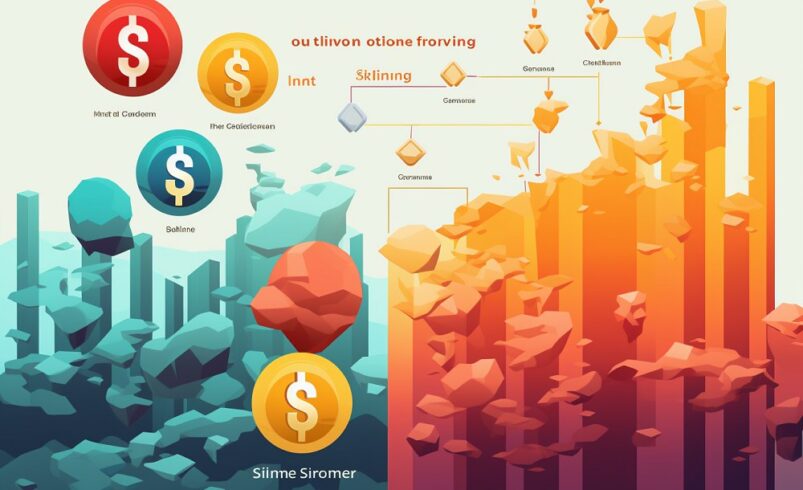Inflationary And Deflationary Token Models And How They Impact Market Liquidity

Table of Contents
The traditional supply and demand economic factors are at the heart of tokenomics, just as they are for price fluctuations. The study of the economics of cryptocurrencies, including their creation, distribution, special features, and market availability, is known as cryptocurrency economics.
Tokenomics In Crypto Explained
Tokenomics is the driving force behind cryptocurrency, controlling the supply and demand for tokens and determining their value and usability. Each digital asset’s tokenomics varies. For instance, Solana’s SOL has a maximum supply of 508 million coins, while BTC has a maximum supply of just 21 million.
Crypto project developers plan the distribution and number of coins and release and withdrawal dates. The projected dynamics significantly impact the liquidity of the market and the crypto economy as a whole.
It is essential to understand these tokenomics to realize the possibilities of the cryptocurrency world. It influences our views on value, interactions with tokens, and expectations about their future.
What Are Crypto Inflationary Tokens?
The gradual decline in the purchasing value of digital currencies is known as cryptocurrency inflation. This is the case with inflationary tokens, which function within a cryptocurrency system, aiming to devalue the coin by increasing its quantity.
These tokens are based on a mechanism where the supply of tokens increases over time. The underlying mechanism of every cryptocurrency usually specifies an inflation rate, which controls the proportion by which the token supply grows over time.
Theoretically, a coin’s value can fall as more are released into circulation. This weakens the buying power of such tokens. Inflationary currencies accomplish this surging supply through techniques such as mining and staking.
Deflationary Crypto Tokens
The supply circulation of deflationary cryptocurrencies is purposefully reduced to sustain or grow their value. Such tokens’ value is boosted over time as the reduction in supply creates scarcity in demand, leading to a rise in price.
Instead of using a predetermined deflation rate like inflationary tokens, these employ protocols that decide when and how tokens are reduced in circulation, typically through burning mechanisms. The good news is that reducing supply through these means does not disrupt the market.
Meanwhile, deflationary tokens face complex dynamics in their value proposition due to the delicate balance between scarcity and practical utility.
Impacts Of Inflationary And Deflationary Tokens On Trading Volume
Order execution and liquidity are improved through massive trade volumes. Tokens that are inflationary or deflationary achieve price stability and high liquidity in different ways.
Controlling Supply
Tokens regulate liquidity by changing the total, circulating, and maximum supply. For example, the maximum number of BTC tokens is 21 million.
Staking and Mining
Blockchain systems incentivize miners through staking and mining to ensure token supply stability. Two examples of such systems are Ethereum and Bitcoin. Stakers use the proof-of-stake (PoS) technique, whereas miners use the proof-of-work (PoW) mechanism.
Token Burn
Deflationary cryptocurrencies lessen the impact of inflation by erasing coins from circulation entirely.
Yield farming
This is a method wherein tokens not in use can be “farmed” for interest through smart contracts. By utilizing liquidity pools, this approach improves liquidity and makes transactions easier.
Effects Of Inflationary And Deflationary Tokens On Market Liquidity
Inflationary tokens tend to increase supply and liquidity, whereas deflationary ones tend to decrease circulation and liquidity. Nevertheless, deflationary tokens aren’t immune to market manipulation.
Some large holders may hoard tokens expecting a value increase due to scarcity. However, they create price instability when they sell their holdings at once. Curiously, during periods of high activity, certain inflationary cryptocurrencies, such as Ether (ETH), use burning mechanisms to decrease the number of tokens in circulation and stabilize prices.
Consistent demand and limited supply of deflationary tokens make them more valuable because they are less liquid. Inflationary cryptocurrencies are designed for daily transactions and have an abundant supply without rigid limitations, guaranteeing high liquidity. On the contrary, deflationary tokens are less liquid because they promote value preservation and function as inflation hedges.
Time Crypto Market offers content visibility for dozens of crypto enterprises, and you can be a part of our network! Reach out to us on our telegram chat for inquiries. The nature of cryptocurrencies is highly unpredictable; always perform your due diligence before any investment. Several articles on our site come from guest contributors or are commissioned pieces, not originating from Time Crypto Market's in-house writers. The perspectives shared in these articles might not necessarily align with those of Time Crypto Market. We do not assume responsibility for the veracity, caliber, promotions, offerings, or any other elements presented on our platform. Consult our comprehensive terms of service and disclaimer for more details.








